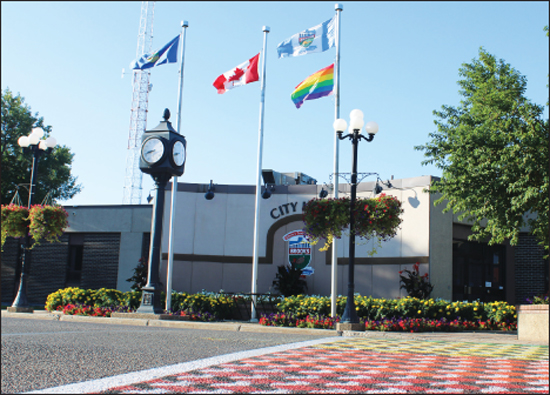SANDRA M STANWAY
Brooks Bulletin
The city plans to apply for a provincial water/wastewater partnership grant to construct a new wastewater facility with utility bills expected to reflect this change starting in January 2025.
The city’s average effluent quality values exceeded the wastewater systems effluent regulations and they did receive a transitional authorization to set site-specific effluent limits.
In 2016 the city failed to meet the transitional authorization limits and were not allowed to discharge any deleterious substances in 2017 but the city continued with its normal practices and discharged effluent containing some level of deleterious substances which was in contravention of provincial regulations.
In 2018 the city received written warning of contravention of the Fisheries Act and the Wastewater System Effluent Regulations.
City CAO Chris Parker stated that the effluent quality-related contraventions are largely unavoidable given the lack of operational flexibility to improve the treatment.
It has been determined that maintaining the conventional lagoon system is not practical as it requires additional land for storage cells and the EID would like to see the city find an alternative method.
“Therefore, the ability to effectively handle, treat and dispose of wastewater presently and for future growth is becoming increasingly important for long term viability of the region,” he reported.
During the city committee meeting last week Parker discussed the two systems – magna and mechanical – that the city has considered over the years for its wastewater system.
One system looked at is the magna system which is a new process that hasn’t been proven. A study estimates that the cost for the system and a future upgrade would exceed $30 million and an annual operation and maintenance price tag of approximately $900,000.
The traditional wastewater system, which administration has recommended, is a membrane reactor which is estimated at $29 million. It would offer a more straightforward approach for handling increases in effluent and it can be upgraded with minimal changes.
The city would be eligible for a 25 per cent grant under the program.
If the final cost of the project is $29 million and if the city receives a grant of $7.250 million the balance of $21.750 million would be borne by the taxpayers through the utility bills rather than a general tax increase.
“It would be administration’s recommendation that the increases are included in the 2025 utility rates starting in January,” Parker submitted to city committee.
“The 10 year capital forecast, as it’s predicated now, has a $30 million worth of debentures involved and assumes around $60 million of grants that haven’t been applied for yet,” said Bill McKennan, the city’s finance director.
“Needless to say the rates would have to go up substantially. The good news is they are starting from a relatively low base compared to other municipalities.
“There is room to move there but it is going to look like large increases but compared to other communities it would be bringing rates up to the norm. There will be some challenges, needless to say,” he said.
Last year, the average utility rate was $132.50 which had been an annual increase of $31.26.
An analysis of the implications of the major projects that are in the 10 year capital plan will be part of the budget.
Welcome!Log into your account












